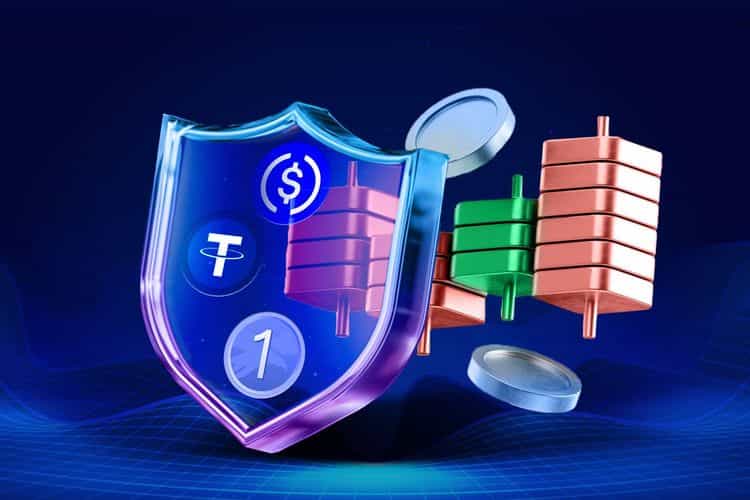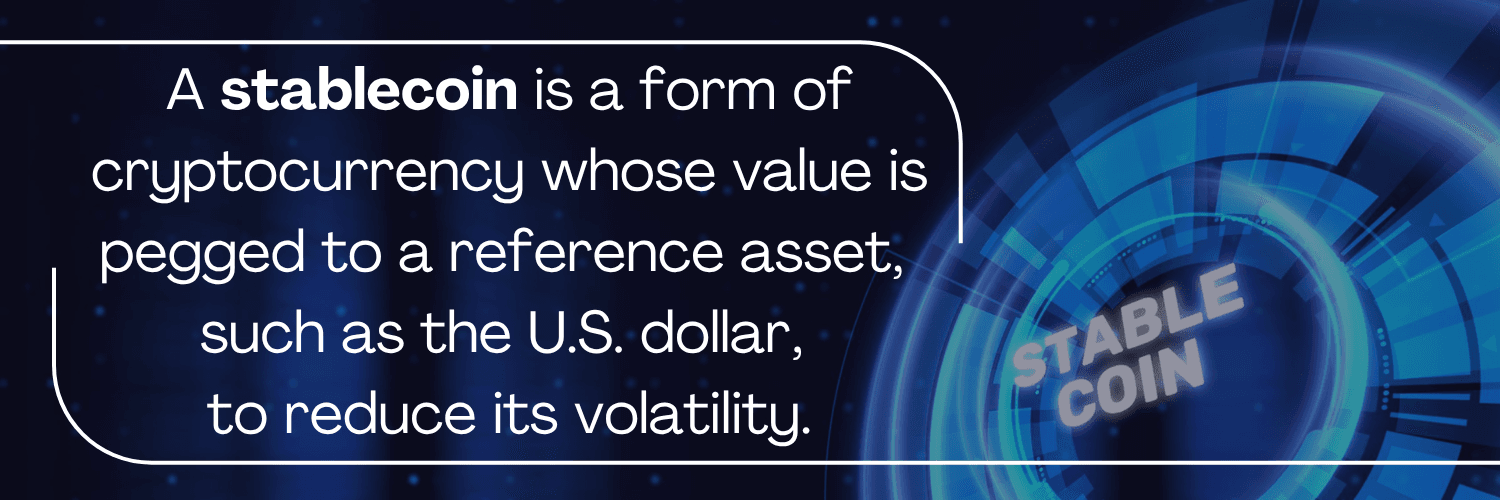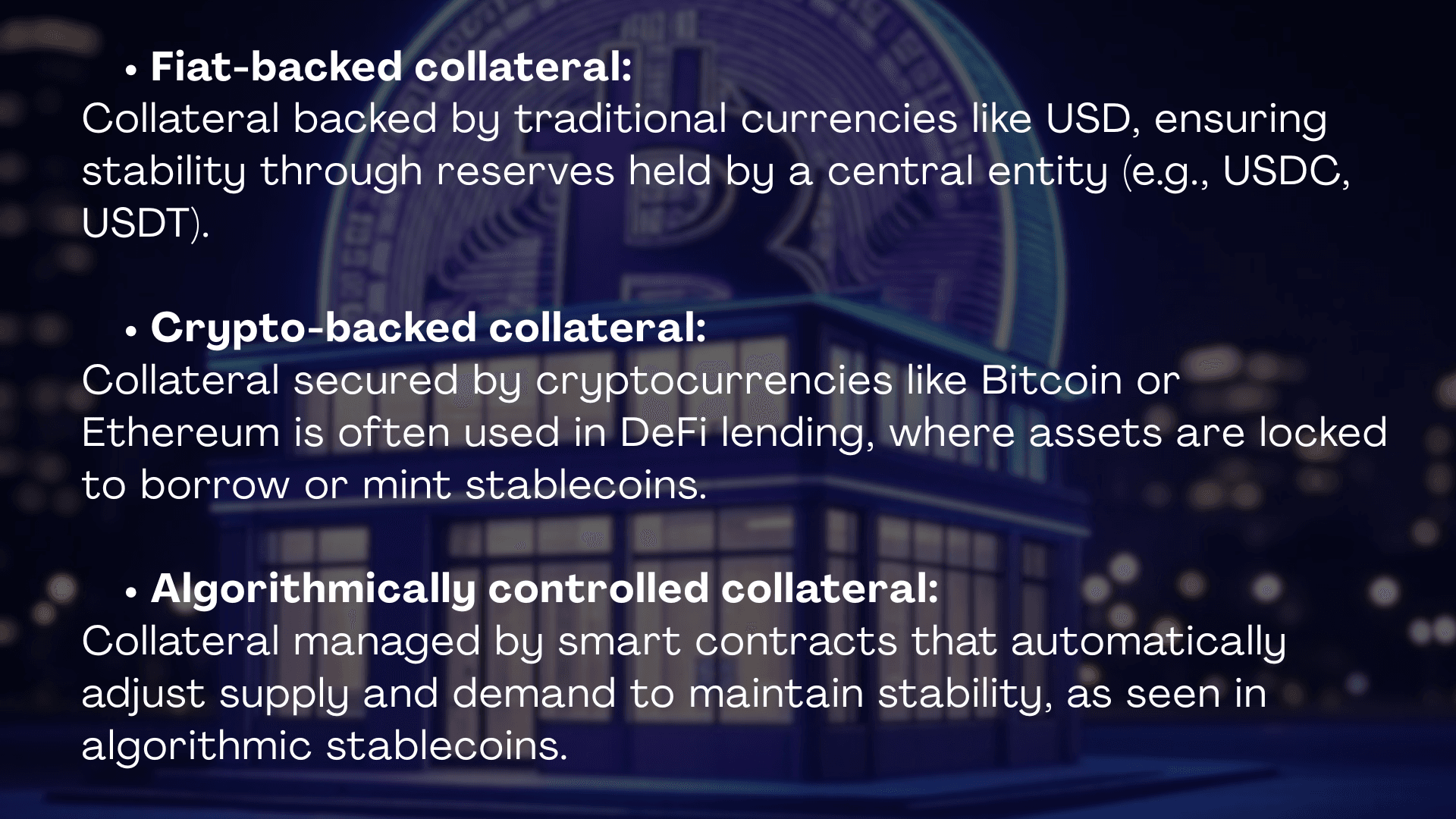Analyzing the Impact of Stablecoins on Market Volatility


In recent years, stablecoins have garnered significant attention in the cryptocurrency and financial markets due to their potential to stabilize the inherently volatile crypto environment. These digital currencies, pegged to traditional assets such as the U.S. dollar or other commodities, play a crucial role in maintaining price stability for traders and investors. However, despite their apparent stability, the impact of stablecoins on overall market volatility is still widely debated. In this article, we’ll explore the functioning of stablecoins, their potential benefits in reducing market fluctuations, and the challenges they face in maintaining their stability.
What Are Stablecoins and How Do They Work?
Stablecoins are a type of cryptocurrency designed to maintain a stable value by being pegged to a reserve of assets, most commonly a fiat currency such as the U.S. dollar. Unlike traditional cryptocurrencies like Bitcoin and Ethereum, which experience extreme fluctuations in value, stablecoins aim to maintain a steady price, typically valued at 1:1 with the underlying asset.
They work by using algorithms, collateral, or other mechanisms to ensure that their value remains consistent. The stability of stablecoins has made them a vital tool in the cryptocurrency space for trading, remittances, and decentralized finance (DeFi) applications. However, despite their stability, they are not entirely free from risks and market dynamics.

The Role of Collateral in Stablecoin Stability
Collaterals form the economic backbone of stablecoins, acting as the primary mechanism that upholds their price stability and market integrity. In a decentralized financial system where trust is algorithmic rather than institutional, collateralization ensures that each issued stablecoin is supported by assets of verifiable and redeemable value. These reserves function as a liquidity and solvency buffer, absorbing market shocks and preserving the peg during high volatility or liquidation cascades. The composition, valuation method, and risk management of collateral, whether on-chain or off-chain, directly influence a stablecoin’s capital efficiency, depeg resistance, and systemic transparency. Depending on the model, collateral can take various forms: fiat-backed (custodial reserves held by regulated institutions), crypto-backed (overcollateralized digital assets managed through smart contracts), or algorithmically controlled (stabilized via supply-demand feedback mechanisms). Each approach embodies different trade-offs between decentralization, scalability, and regulatory assurance, defining how trust and stability are engineered in modern stablecoin architectures.
The collateral ensures that the stablecoin remains pegged to the desired value. Without this collateral, the stablecoin could fail to hold its value, leading to a loss of confidence among investors and users.

Types of Stablecoins
There are three main types of stablecoins in the market today:
Fiat-Collateralized Stablecoins
Fiat-collateralized stablecoins are backed 1:1 by a reserve of fiat currencies such as the U.S. dollar or the euro. These coins are often seen as the most secure because they are directly tied to a traditional asset. Examples include Tether (USDT) and USD Coin (USDC), where each stablecoin in circulation is backed by an equivalent amount of fiat currency held in reserve.
Crypto-Collateralized Stablecoins
Crypto-collateralized stablecoins are backed by a reserve of other cryptocurrencies, typically volatile ones like Ether or Bitcoin. These stablecoins are managed through smart contracts and often use over-collateralization to maintain stability. An example is Dai (DAI), which is backed by a basket of cryptocurrencies but uses smart contracts to ensure that the value remains pegged to the U.S. dollar.
Algorithmic Stablecoins
Algorithmic stablecoins are not backed by collateral at all but instead rely on algorithms to regulate supply and demand, adjusting the coin's supply in response to market fluctuations. These stablecoins aim to keep their value stable without the need for collateral reserves. Ampleforth (AMPL) is an example of an algorithmic stablecoin, where the supply of the token changes automatically based on market conditions.
How Stablecoins Influence Market Volatility
Stablecoins have the potential to influence market volatility in several ways. By providing a stable store of value, they allow traders to park their funds in a non-volatile asset during periods of high market fluctuation. This can help prevent massive price swings in other cryptocurrencies, as traders can easily convert their assets into stablecoins to hedge against risk.
However, the widespread use of stablecoins can also contribute to market instability if the reserves backing them are not properly managed or audited. Additionally, if a major stablecoin such as Tether were to experience a sudden depeg event, it could trigger panic and exacerbate market volatility.
During the TerraUSD (UST) collapse in May 2022, the algorithmic stablecoin lost its dollar peg, triggering a liquidity cascade that erased over $40 billion in market value. As UST holders rushed to redeem their tokens, the associated asset LUNA entered a hyperinflationary spiral, dragging down major cryptocurrencies like Bitcoin and Ethereum as investors fled to safety. This event demonstrated how the failure of a major stablecoin can intensify volatility across the entire crypto market, transforming what should be a stabilizing mechanism into a systemic contagion vector.
The Benefits of Stablecoins in Reducing Market Fluctuations
Stablecoins provide several key benefits that help reduce market fluctuations:
Stablecoins act as a safe harbor asset during periods of extreme price movement in the crypto market. When Bitcoin or Ethereum experience sharp downturns, investors can swiftly convert their holdings into stablecoins to preserve capital without leaving the blockchain ecosystem. For example, during the May 2021 crypto market crash, trading volumes in USDT (Tether) and USDC (USD Coin) surged as traders sought stability amid massive sell-offs. While volatile tokens can still sell off, the rapid flight to stablecoins provided a safe harbor that helped curb additional downward pressure, showing how stablecoins act as a buffer against market-wide liquidations and maintain overall liquidity even in crisis periods.
Stablecoins significantly enhance on-chain and cross-exchange liquidity by providing a consistent medium of exchange that underpins most trading pairs. Because their value remains stable, they enable efficient arbitrage, large-scale trading, and DeFi operations without price distortion. For instance, DAI, a decentralized stablecoin issued by MakerDAO, provides liquidity across lending protocols like Aave and Compound, while USDC serves as a dominant settlement asset on centralized exchanges like Coinbase and Binance. This interoperability and instant transferability across platforms allow stablecoins to stabilize liquidity pools and ensure smoother market operations across blockchains and exchanges.
Stablecoins also promote financial inclusion and cross-border accessibility, particularly in countries with unstable currencies or restricted banking access. In regions such as Argentina, Venezuela, and Turkey, individuals increasingly use USDT and USDC to protect savings from hyperinflation and to transact in a dollar-equivalent asset. Similarly, blockchain-based remittance services like Stellar and XRPl leverage stablecoins to facilitate low-cost, near-instant international payments, bypassing traditional banking rails. This makes stablecoins a practical solution not only for traders but also for everyday users and businesses seeking stable, borderless financial tools in uncertain economic environments.
These features make stablecoins an attractive option for traders and investors seeking stability in the crypto market.
The Risks and Challenges of Using Stablecoins for Market Stability
While stablecoins offer numerous benefits, they also come with risks and challenges that can affect their role in stabilizing markets.
Potential Issues with the Underlying Collateral of Stablecoins
One of the major concerns with stablecoins is the risk associated with the underlying collateral. In the case of fiat-backed stablecoins, there is a risk that the issuer may not have enough reserves to back the entire supply of the stablecoin. Similarly, crypto-backed stablecoins face the risk of volatility in the collateral, which could lead to instability in the stablecoin itself.
Regulatory Concerns and Their Impact on Stablecoin Market Dynamics
Regulatory scrutiny of stablecoins is increasing, as governments around the world are concerned about the potential for stablecoins to disrupt traditional financial systems. For example, the U.S. government is considering regulating stablecoins to ensure that they are properly collateralized and do not pose a systemic risk. These regulatory changes could impact the adoption and use of stablecoins, affecting their role in reducing market volatility.
The Future of Stablecoins and Their Role in Financial Markets
Looking ahead, stablecoins are positioned at the center of the next evolution of digital finance, blurring the boundaries between traditional financial infrastructure and decentralized ecosystems. As global adoption accelerates and institutional participation deepens, stablecoins are no longer just crypto market instruments, they’re emerging as core settlement layers for payments, trading, remittances, and even tokenized real-world assets (RWAs).
Driven by both regulatory clarity and technological innovation, stablecoins are evolving into multiple classes: regulated fiat-backed coins (like USDC or PayPal USD) that integrate with the banking system, on-chain collateralized models (such as DAI or sDAI) optimized for DeFi composability, and next-generation synthetic or yield-bearing stablecoins that merge stability with capital efficiency. As projects experiment with Real-World Asset tokenization, stablecoins are increasingly being used as settlement collateral in DeFi credit markets, treasury management tools, and cross-chain liquidity layers.
At the same time, governments and central banks are exploring CBDCs (Central Bank Digital Currencies), which will coexist, and in some cases compete, with private stablecoins. This convergence could lead to hybrid financial rails, where CBDCs ensure sovereign backing while stablecoins drive programmability, interoperability, and innovation across blockchains.
CBDC benefits and challenges
Regulatory visibility & compliance: A major policy benefit cited for CBDCs is transparent, auditable transaction data under existing laws, improving AML/CFT detection, speeding investigations, and enabling real-time, standards-based reporting across borders. BIS and IMF analyses note that CBDC designs can increase traceability for competent authorities (subject to national legal limits), while also cutting frictions in cross-border settlement via shared technical standards and programmable compliance hooks. In the U.S., the July 2025 GENIUS Act created a federal licensing framework for payment stablecoins (not a digital dollar), signaling a preference to regulate private stablecoins; at the same time, the House advanced the CBDC Anti-Surveillance State Act to block a Fed-issued retail CBDC without explicit congressional authorization, and Donald Trump publicly vowed to “never allow” a U.S. CBDC, highlighting America’s privacy and governance concerns even as policymakers push for more transparent rails.
JUST IN: 🇺🇸 Donald Trump says "As your president, I will never allow the creation of a Central Bank Digital Currency. Such a currency would give our federal government absolute control over your money." pic.twitter.com/lSE2AGYgOm
— Bitcoin Magazine (@BitcoinMagazine) January 18, 2024
The success of stablecoins hinges on balancing decentralization, compliance, and transparency. Emerging frameworks like MiCA, the U.S. Stablecoin Bill, and Basel tokenization standards will shape global operations. Meanwhile, modular architectures and cross-chain networks (e.g., Chainlink’s CCIP, Circle’s CCTP) will transform stablecoins into universal settlement assets for both Web3 and institutional finance.
In short, stablecoins are not merely following the trend, they are reshaping it, serving as the connective tissue of tomorrow’s tokenized, interoperable financial system, where every asset, payment, and protocol speaks a shared digital language of value.
Summary
Stablecoins have proven to be a valuable tool in reducing market volatility by offering a stable store of value during times of high market fluctuations. While there are risks associated with their use, including concerns over collateral management and regulatory scrutiny, stablecoins are likely to play a significant role in the future of financial markets. As the industry continues to mature, stablecoins could provide greater stability in the otherwise volatile world of cryptocurrencies.
Resources
Frequently asked questions
Check out most commonly asked questions, addressed based on community needs. Can't find what you are looking for?
Contact us, our friendly support helps!
What are the main risks of using stablecoins?
The primary risks of using stablecoins include issues with the underlying collateral, the possibility of a depeg event, and increasing regulatory concerns that could impact their stability and adoption.
How do stablecoins reduce market volatility?
Stablecoins help reduce market volatility by providing traders with a haven during periods of market uncertainty. This allows traders to protect their assets without facing drastic price swings.
Will stablecoins be regulated in the future?
Yes, regulatory scrutiny of stablecoins is increasing, with governments around the world working on frameworks to ensure that stablecoins are properly collateralized and do not pose systemic risks to financial markets.
What are the main risks of a retail CBDC?
Critics argue a retail CBDC could expand state financial surveillance (granular visibility into payments), enable programmable controls (e.g., targeted freezes or spend restrictions), disintermediate banks (Risk of deposit withdrawals in financial stress), and enlarge the cyber/operational attack surface. These concerns motivate U.S. proposals to restrict or block a digital dollar absent strong privacy and oversight guarantees.




